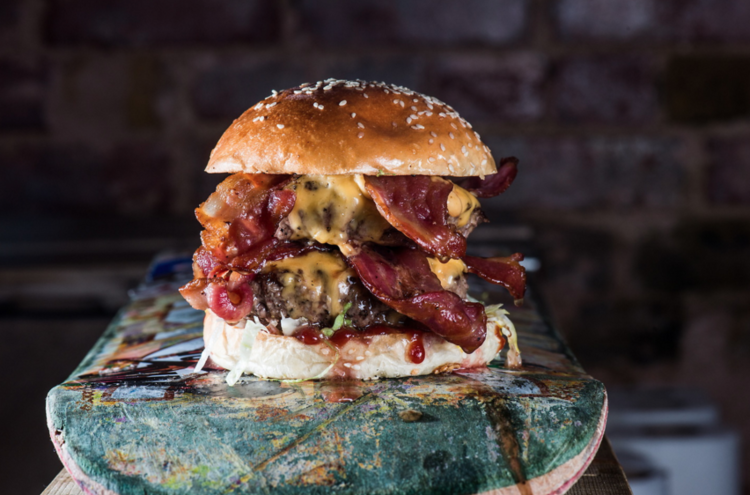I was always quietly proud of my vegetarian stance. Still am, in fact. It takes guts being cast as the ‘difficult’ one at a dinner, or answering those routine ‘don’t you
miss a bacon sarnie?’ questions.
I lived through all that resolutely for 25 years. Then, by a collision of various factors, I thought I’d see what it was like to bend the rules. After all, our diet is only ever really defined by our next meal choice.
Perhaps, like the Muslim who decides that the odd pint of Guinness isn’t really all that haram, or the crash dieter who declares themselves 100% Paleo, then a devotee of The Atkins the next month, (and back on the trusted packet-of-digestives-a-day plan shortly after), I too could re-imagine my own take on vegetarianism, to incorporate some meat-eating.
Thids might sound ludicrous, but our food preferences, and how we publicly define ourselves by them, are rarely based on sense.
LOCAL ADVERTISING
Peer pressure, localised fads and strong social conditioning seem to dominate what we see fi t to masticate. You’d likely agree that fundamentalist adherence to belief systems is generally the root of, rather than a solution to, the world’s big problems.
So with this in mind, I dabbled with the odd carnivorous adventure. I call it nonfundamentalist vegetarianism. And it’s been a lot of fun. Not only rediscovering tastes and dishes familiar from two and a half decades previous, but also in the reaction of friends, who initially looked on with mouths agape at the sight of me – the vegetarian one – tucking into a dripping pink-rare burger, or duck heart on a skewer, (no half measures: if you are going to eat bits of animals, it’s more bizarre to feel squeamish about it, right)?

At first, I was acutely aware of eating the remains of another being, particularly when consuming a single creature whole, such as a hapless little prawn. Still, now five years into this new dietary experiment, that respectful awareness remains during each meal, and I hope it always will.
It’s clear that today’s menus and shopping baskets rely far too heavily on cheaply produced meat and fi sh, in neat plastic packs far removed from the grim realities of how such abundance is made possible. These foods should be special, not everyday, and produced at a cost that isn’t simply driven down by scale and suffering.
And then what happens? Just as I’ve gone and divested myself from a quarter of a century of plant-based meals, everyone is going nuts over veggie and vegan dishes. One of the reasons I swung the other way was a creeping horror at finding myself among the growing ranks of semi-hysterical ‘special dietary requirements’ eaters.
It was OK to be the one stoically stuck with a salad when the choices were so limited. It had intent. Now people pick their supposed intolerances the way they might choose this season’s essential new hat, and toss them aside just as easily once they’re no longer en vogue. Realistically, the world is not going vegan. But the way I’m eating now is almost certainly how the majority of humans will need to eat meat in the near future.
Us non-fundamentalist vegetarians –or go on then, flexitarians – are committed to eating flesh and fish, but only now and then. We’ll switch to lab-grown meat in a flash, when it’s been perfected.
For now, it is I who asks the annoying questions. Because surely if a chicken has been fed, reared, transported, slaughtered, packaged and cooked, all at great cost to the environment, let alone the poor bird itself, and is looking destined for landfill because nobody else wants to eat it, the most respectful and humane thing to do is at least eat the bloody thing?



